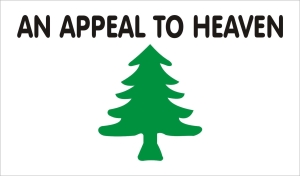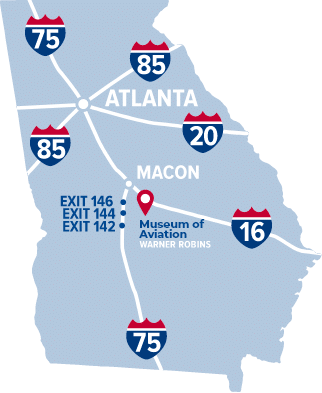On the third floor of the Eagle Building here at the Museum of Aviation we have an observation gallery. It is a great place to take in the grounds, giving a unique view of many of our outdoor aircraft exhibits as well as the amphitheater space. The Victory Café is located nearby also, so a snack or lunch while you enjoy the view is always an option. Hanging above you as you sit and enjoy the view are 42 (soon to be 45) flags from the history of the United States. The flags are currently without individual captions, other than a sign at the entrance to the observation gallery noting their presence and giving some basic information. We are about to give each flag its own caption to help visitors better understand their historical significance. I learned some interesting things while preparing these captions and the visual aspect of flags has always interested me. With that in mind I picked a few of the more visually appealing (and in some cases historically obscure) flags from the gallery to share with you.
This flag drew my attention initially simply because of its unique shape and design. It is known as the Raven Flag or Raven Banner. This was a Scandinavian or Viking flag that was possibly brought with them on their journeys to North America. Scholars believe the image of the raven was a reference to Odin, the Norse god of war and death.
The Rhode Island Regimental Colors is beautiful flag that, like the Raven Banner, first piqued my intersest because of its looks. Carrying this flag, members of the Rhode Island militia were among the first to join the Minutemen in Boston in 1774. The starry area in the flag symbolized national unity and the anchor has been used as a symbol of government since 1647.
Another unique design that caught my eye. The Latin inscription on the flag is “Vince Aut Morire,” which means “Conquer or Die” while the arm emerging from the cloud represents the arm of God. The original Bedford Flag may be the oldest complete flag known to exist in the United States. The flag has a controversial history, go here for the primer.
In opposition to the busy look of the Bedford Flag above, Washington’s Cruiser Flag is a study in simplicity. Washington launched a group of boats in the fall of 1775 that flew the flag. The tree was a reference to the New England Liberty Tree while the “APPEAL TO HEAVEN” was in reference to the overwhelming odds faced by the Continentals.
Commodore O.H. Perry hoisted this flag during the War of 1812. It features the dying words of his friend Captain James Lawrence, who was mortally wounded in battle. Perry won a decisive victory over the British fleet during the War of 1812 under this flag.
The Guilford Courthouse Flag is easily recognized because of its reverse colors from the standard United States flag. It also features eight pointed stars. The flag was flown in 1781 during the Revolutionary War at the Battle of Guilford Courthouse in Greensboro, North Carolina.
John Paul Jones flew this flag on the captured British ship Serapis and it is therefore known as the Serapis Flag. The flag is similar to the U.S. flag of the era but is unique in that it features blue stripes along with the normal red and white ones. The 13 stars on the flag also vary from eight to seven points.

















